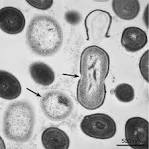Ralstonia insidiosa

Classification
Domain: Bacteria
Phylum: Pseudomonadota
Class: Betaproteobacteria
Order: Burkholderiales
Family: Burkholderiaceae
Genus: Ralstonia
Species: R. insidiosa
Species
|
NCBI: [1] |
Ralstonia insidiosa
Description and Significance
Ralstonia insidiosa is a bacillus shaped bacterium and can be found in ponds, rivers, soils, and sludge naturally. It can also be found in drinking water, industry purified water, and most importantly, hospital water supplies. This organism is important to understand because it can cause sepsis and other infections in patients within hospital settings.
Genome Structure
This bacteria has two circular chromosomes, one being primary that contains 4 million base pairs, and the other being secondary that contains 2 million base pairs. It also has one 50 kb plasmids. It contains 16S rRNA.
Cell Structure, Metabolism and Life Cycle
It is: aerobic, oxidase positive, gram negative, and classified as a non fermentative bacillus. It is a chemoheterotroph that relies on other carbon sources for cell growth. R. insidiosa can use hydrocarbons from chemical compounds normally found in disinfectants as a source of carbon. It can also do this in hypoxic environments.
Ecology and Pathogenesis
It does not normally affect healthy humans, but those who are already immunocompromised. It is normally found in hospitals and in the lungs of patients that have cystic fibrosis. Patients normally are infected via contaminated water and sterile products. This happens because R. insidosa is very small and is able to pass through 0.2mm filters that are used for sterilization.
References
Fang, Qingqing, et al. “Nosocomial Bloodstream Infection and the Emerging Carbapenem-Resistant Pathogen Ralstonia Insidiosa - BMC Infectious Diseases.” BioMed Central, BioMed Central, 23 Apr. 2019, https://bmcinfectdis.biomedcentral.com/articles/10.1186/s12879-019-3985-4.
Ryan, Michael P., and Catherine C. Adley. “The Antibiotic Susceptibility of Water-Based Bacteria Ralstonia Pickettii and Ralstonia Insidiosa.” Journal of Medical Microbiology, Microbiology Society, 1 July 2013, https://www.microbiologyresearch.org/content/journal/jmm/10.1099/jmm.0.054759-0.
Xu, Yunfeng, et al. “Genome Sequences of Ralstonia Insidiosa Type Strain ATCC 49129 and Strain FC1138, a Strong Biofilm Producer Isolated from a Fresh-Cut Produce-Processing Plant.” Genome Announcements, U.S. National Library of Medicine, 18 Aug. 2016, https://www.ncbi.nlm.nih.gov/pmc/articles/PMC4991715/#:~:text=It%20contains%205%2C820%20protein%2Dcoding,large%20plasmid%20(50%2C770%20bp).
Author
Page authored by Samarah Jeffrey, student of Prof. Bradley Tolar at UNC Wilmington.